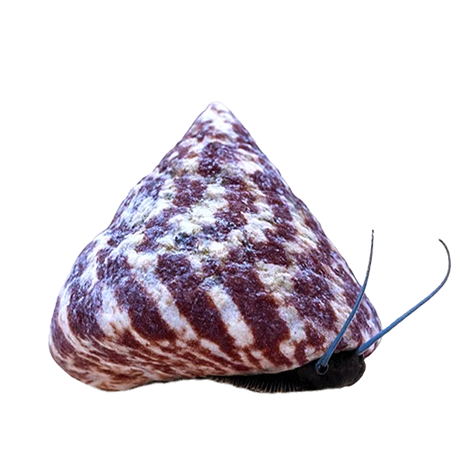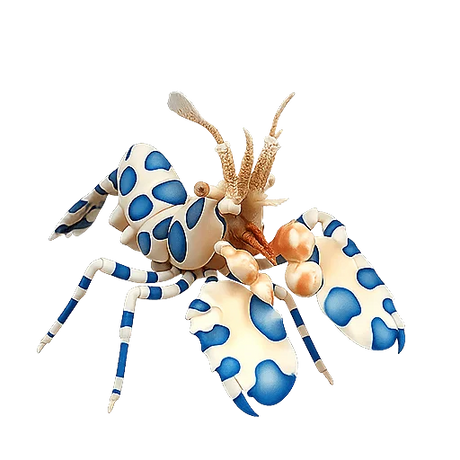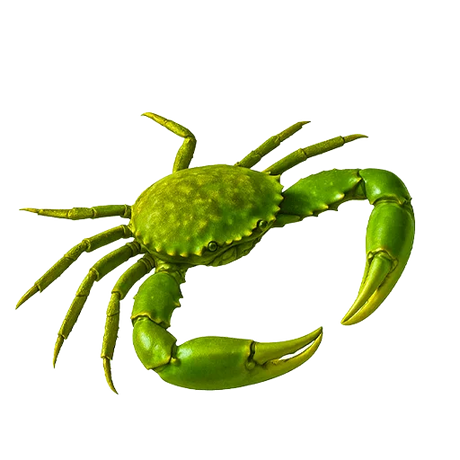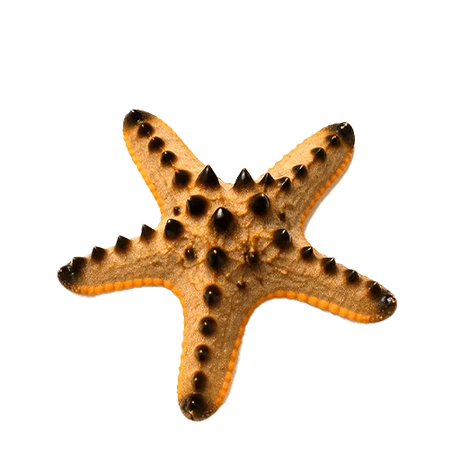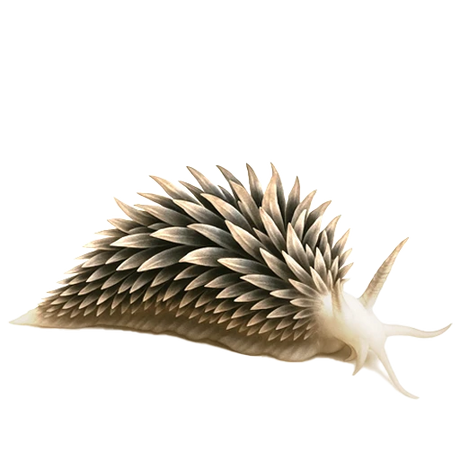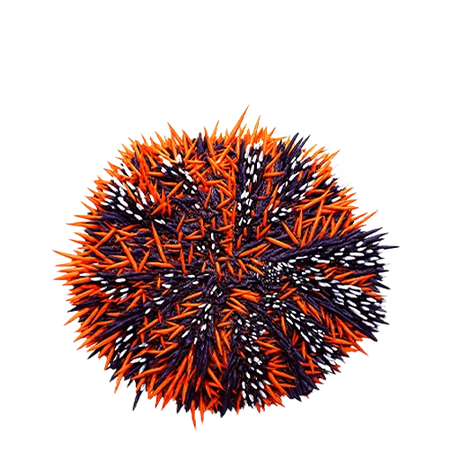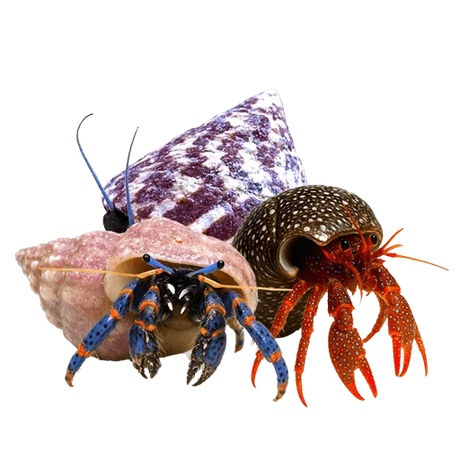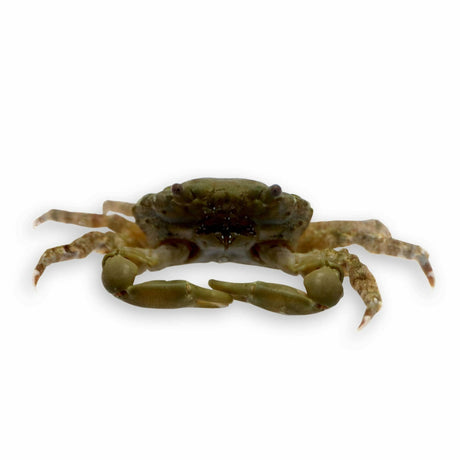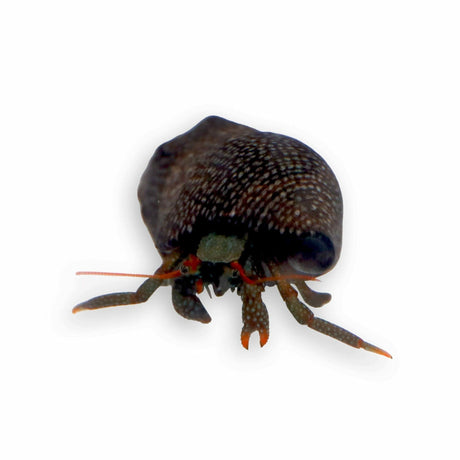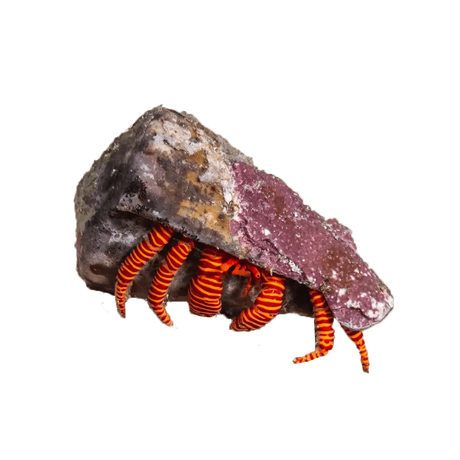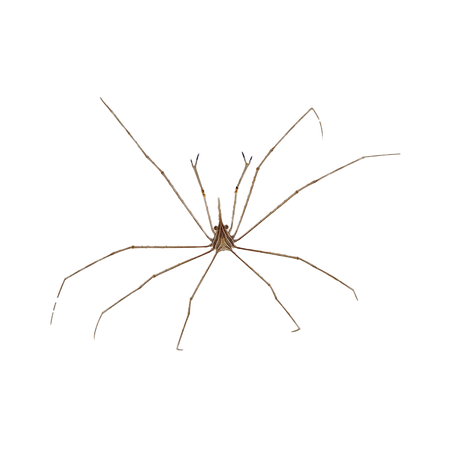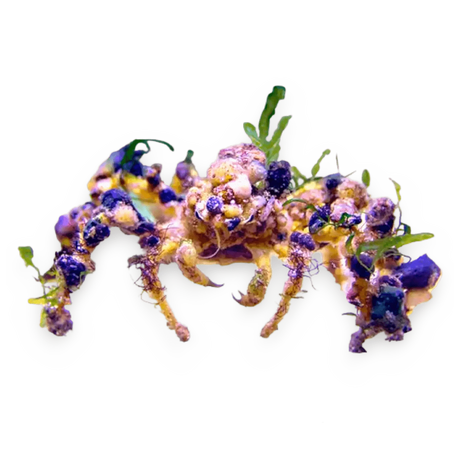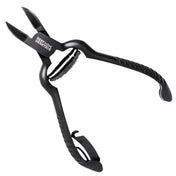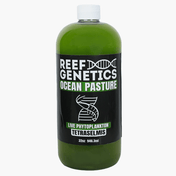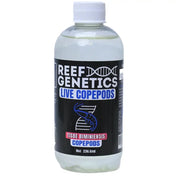Dive Deeper: Info & Tips for Saltwater Aquarium Crabs
Saltwater crabs are opportunistic scavengers, feeding on detritus, leftover food, and algae. They are highly effective in controlling unwanted growths and breaking down organic matter. Hermit crabs, in particular, are known for climbing over rockwork, burrowing into sand, and occasionally swapping shells—so it’s helpful to keep a few spare shells in your tank.
While most reef crabs are peaceful, occasional aggression can occur if food or shells are limited. To minimize risk, avoid overcrowding and provide enough territory for each crab. They prefer stable systems with low nitrates and good oxygenation, and they can be vulnerable to copper-based treatments.
Saltwater aquarium crabs are hardworking, reef-safe inverts that play a key role in maintaining a clean and balanced marine environment. From hermit crabs that sift sand and scavenge detritus to emerald crabs that help control bubble algae, these invertebrates are a smart addition to any clean-up crew. Their small size, low maintenance needs, and diverse appearances make them ideal for reef tanks and fish-only systems alike.
At Top Shelf Aquatics, we offer a curated selection of saltwater crabs for aquariums, including popular species like blue legged and red legged hermit crabs. These inverts are peaceful, efficient, and compatible with most marine setups, helping reduce algae buildup, consume waste, and stir substrate.
Top Saltwater Crabs for Aquariums
Blue Legged Hermit Crabs – Small, active, and efficient at algae control. Ideal for nano tanks and tight crevices in reef rock.
Red Legged Hermit Crabs – Slightly larger and more robust than their blue-legged cousins. Great for sand stirring and scavenging.
Emerald Crabs – Known for their role in bubble algae control. Best kept in tanks with sufficient algae or supplemental feeding.
Scarlet Hermit Crabs – Brightly colored and peaceful. Tend to stay on the rockwork and are less aggressive than other hermits.
Porcelain Crabs – Filter feeders with unique fan-like appendages. Best for peaceful reef setups with low flow zones.
Ideal Parameter Range
- Salinity: 1.023–1.026
- Temperature: 74–78°F
- pH: 8.1–8.4
- Ammonia/Nitrite: 0 ppm
- Nitrate: <15 ppm
- Calcium: 400–450 ppm
- Alkalinity: 8–12 dKH
Setting Up an Aquarium for Saltwater Crabs
Saltwater crabs thrive in well-established tanks with stable parameters and minimal aggression from tankmates. Provide ample live rock, nooks, and sandy areas for them to explore. If keeping hermits, offer empty shells of various sizes to reduce shell-fighting behavior.
Avoid housing crabs with predatory fish or other large inverts that may pose a threat. Crabs may climb overflow grates or move frags, so secure loose items and consider fine mesh in overflow areas.
Feeding Saltwater Aquarium Crabs
Most crabs will scavenge naturally in a mature system, but supplemental feeding ensures consistent health. Offer small bits of frozen food, algae wafers, or dried seaweed. Emerald crabs in particular benefit from targeted algae feedings if natural sources are low.
Avoid overfeeding, which can lead to nutrient spikes. Feed every other day or as needed, based on crab activity and tank cleanliness.
Why Buy Saltwater Crabs from Top Shelf Aquatics?
Our saltwater crabs are hand-selected, acclimated, and inspected to ensure they're healthy and ready to contribute to your tank's ecosystem. Whether you're building a cleanup crew or adding visual diversity to your reef, we provide reliable inverts that make a difference.
Each species is evaluated for compatibility, behavior, and utility to help you make the best choice for your marine system.
